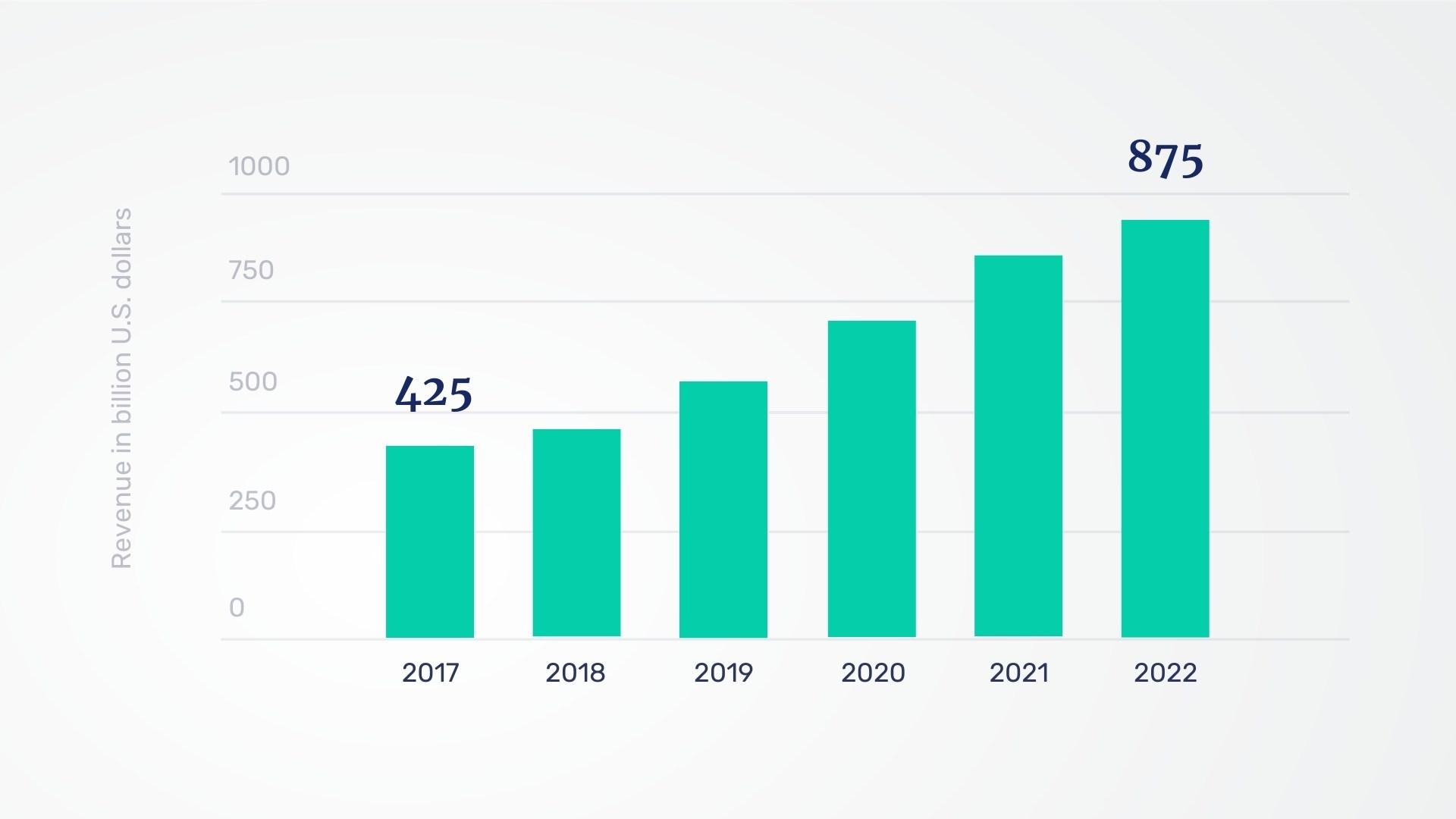As an Enterprise or Mid-Level eCommerce player in today’s world, it is necessary to expand your business into marketplaces. From 2017 to 2022, retail eCommerce sales in the United States have more than doubled, jumping from $425 billion to more than $875 billion. And that growth will continue further. As a result, marketplaces are a great way to increase visibility for your products and grow your business. In fact, nearly 60% of shoppers say they discover new products on marketplaces.
Not only do marketplaces provide sellers with access to a large number of potential customers, but they also offer a number of other benefits, including:
- Increased visibility for your brand
- The ability to quickly scale your business
- Improved customer acquisition and retention rates
- An expanded product offering
- Access to valuable data and insights
Despite these advantages, however, many companies are still hesitant to sell on marketplaces due to concerns about losing control over their brand or getting lost in a sea of competition. But with careful planning and execution, selling on marketplaces can be a major boon for your business. In this blog post, we’ll outline some key tips for expanding your eCommerce business by selling on marketplaces.

Getting Started with Marketplaces in 3 Easy Steps
- The first step is to research the different marketplaces that are available. Etsy, eBay, and Amazon are all popular options. Once you have decided which marketplace you would like to sell on, you need to create a seller account. When creating your account, be sure to provide accurate and up-to-date information about your business. This will help build trust with potential buyers.
- Next, you need to set up your payment method. Marketplaces usually take a percentage of each sale as a commission fee, so you will need to factor that into the prices of your products. Once your payment method is set up, you can start listing your products. Be sure to use high-quality images and write detailed descriptions of each product. This will help attract buyers and generate interest in your products.
- Finally, you need to monitor your activity on the marketplace and respond quickly to any questions or concerns that come up. Buyers want to know that they can count on you for support if they have any problems with their purchase. By responding quickly and efficiently to any issues that arise, you will build trust with buyers and create a positive reputation for your business.
Conlusion
For many brands and retailers, selling on marketplace platforms like Amazon and eBay is a great way to scale their businesses and reach new customers quickly. However, it’s important to carefully consider your goals and objectives before beginning the marketplace expansion process. With careful planning and execution, selling on marketplaces can be a major win for your eCommerce business.
If you have further questions about the risks, opportunities, or process of expanding your business on marketplaces, don’t hesitate to contact us at GlobalEdgeMarkets, and let us transform your business into a global gem.





